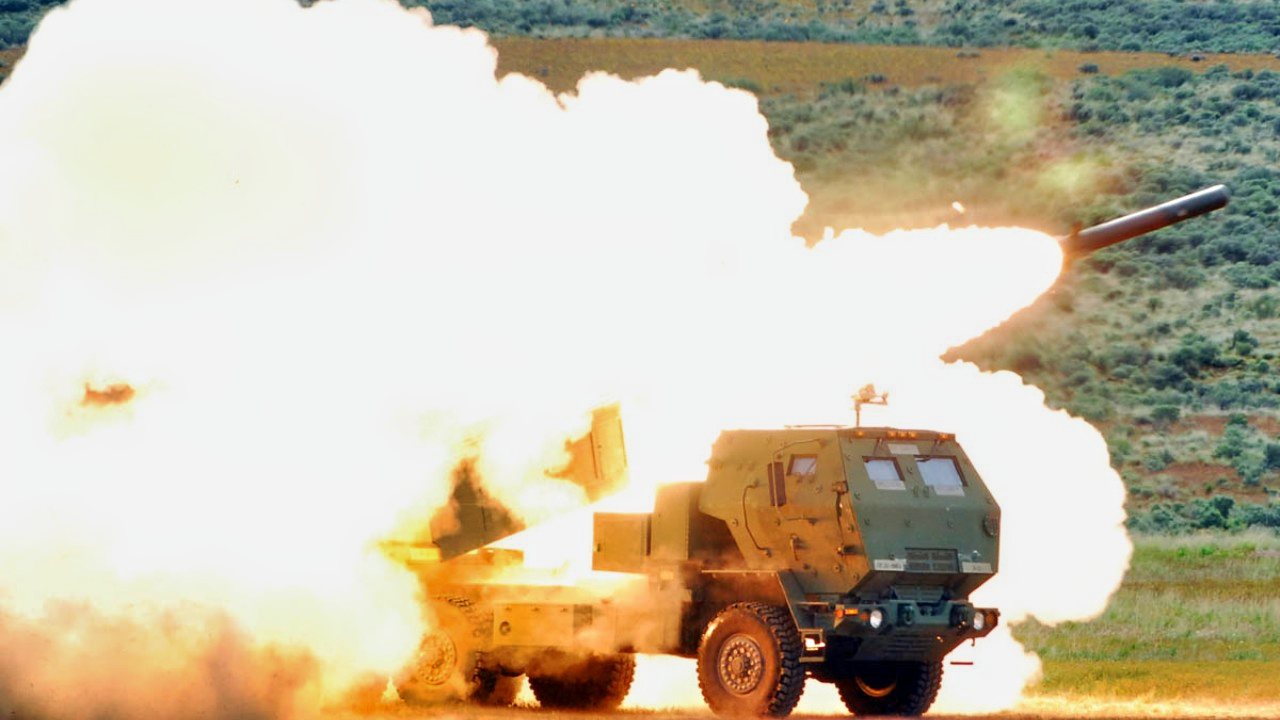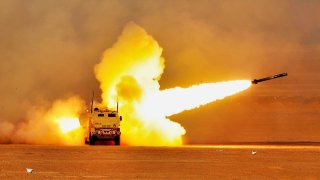Ukraine Is Attacking Targets in Russia with Advanced HIMARS Rockets
The conflict in Ukraine has escalated as the U.S. and other Western countries have authorized Ukraine to strike high-value military targets inside Russia using advanced weaponry such as the M142 HIMARS and M270 MLRS.
Summary and Key Points: The conflict in Ukraine has escalated as the U.S. and other Western countries have authorized Ukraine to strike high-value military targets inside Russia using advanced weaponry such as the M142 HIMARS and M270 MLRS.

-This new phase in the conflict saw Ukraine successfully targeting Russian S-300 and S-400 air defense systems near Belgorod. Ukrainian forces continue to inflict heavy casualties on Russian troops, with recent reports indicating significant losses in personnel and equipment.
-Despite high casualties, Russia's ability to rapidly regenerate its forces, as demonstrated historically, poses a significant challenge. Ukraine and its Western allies must consider this force generation capability in their strategies.
Ukraine Authorized to Strike Inside Russia as Conflict Escalates
The fighting across Ukraine rages on as the Russian military continues with its offensive in the east toward the city of Kharkiv.
In response to the renewed Russian attack, the United States has allowed Ukraine to take off the gloves and use powerful weaponry inside Russia.
A New Phase in the Conflict
The war has entered a new phase after the United States, followed by several other Western countries, gave the green light to Ukraine to engage high-value military targets inside Russia with weapon systems provided as part of a security assistance package.
The Ukrainian forces can now use their highly effective M142 High Mobility Artillery Rocket Systems (HIMARS) and M270 Multiple Launch Rocket Systems (MLRS) to launch precise munition and take out targets within Russia.
In the latest such strike, a Ukrainian M142 HIMARS took out two S-300 or S-400 air defense systems and their supporting vehicles near the Russian city of Belgorod, more than 30 miles from the border with Ukraine. These are the best air defense systems the Russian military has at its disposal and mark a significant loss. In the coming weeks, such incidents are expected to rise as the Ukrainians become more adept at identifying and tracking high-value targets within Russia.
Mounting Casualties and Russia’s Force Generation
Meanwhile, the Ukrainian forces continue to inflict heavy casualties on their Russian adversaries. According to the Ukrainian Ministry of Defense, over the past 24 hours, the Russian forces lost 1,280 troops killed, wounded, or captured, 69 support vehicles and fuel trucks,40 artillery pieces, 39 unmanned aerial systems, including several Iranian-made Shahed suicide drones, 16 infantry fighting vehicles and armored personnel carriers, 12 main battle tanks, 12 pieces of special equipment, 3 anti-aircraft weapon systems, and 2 cruise missiles.
These casualties are quite heavy for 24 hours of fighting. Indeed, losing more than a battalion worth of men, as well as almost 200 pieces of heavy equipment in a day could be debilitating for military forces without Russia’s force generation capacity. But this is the capability that hasn’t only kept Moscow in the war but could eventually turn the tide on its favor.
On February 24, 2022, Moscow launched its large-scale invasion of Ukraine with approximately 200,000 regular and paramilitary troops. More than 23 months later, Russian casualties are estimated between 320,000 and 515,000. Even at the lowest end of the casualty spectrum, the Kremlin has lost more than 150 percent of its initial invasion force. Nevertheless, today, the Russian military has approximately 470,000 troops in Ukraine and has mobilized many more within Russia. This ability to regenerate forces at rapid intervals has historically been an ace up Moscow’s sleeve. Russia is vast. Russian leaders have understood that they can buy time by giving up territory and sacrificing hundreds of thousands of troops, like in the Napoleonic Wars and World War Two.

Ukraine and the West should take Russia’s force generation ability into close consideration.
About the Author
Stavros Atlamazoglou is a seasoned defense journalist specializing in special operations and a Hellenic Army veteran (national service with the 575th Marine Battalion and Army HQ). He holds a BA from the Johns Hopkins University and an MA from the Johns Hopkins’ School of Advanced International Studies (SAIS). His work has been featured in Business Insider, Sandboxx, and SOFREP.


